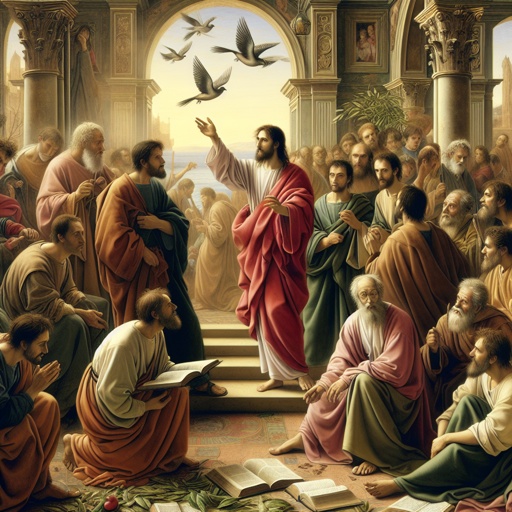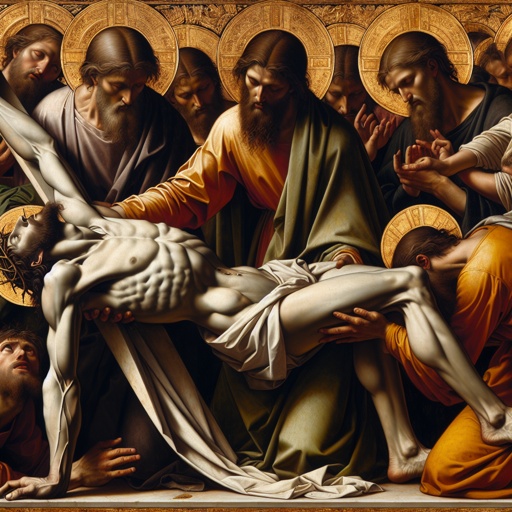What does Romans 16:20 mean?
"And the God of peace shall bruise Satan under your feet shortly. The grace of our Lord Jesus Christ be with you. Amen." - Romans 16:20

Romans 16:20 - "And the God of peace shall bruise Satan under your feet shortly. The grace of our Lord Jesus Christ be with you. Amen."
Romans 16:20 in the King James Version (KJV) of the Bible reads, "And the God of peace shall bruise Satan under your feet shortly. The grace of our Lord Jesus Christ be with you. Amen." This verse is a powerful declaration of the victory that believers have over the forces of darkness through the power of God.
The verse begins with a promise of victory over Satan, the enemy of God and His people. It refers to "the God of peace," emphasizing that God is a God of order and harmony, not of chaos and discord. This sets the tone for the rest of the verse, as it assures believers that despite the conflicts and struggles they may face, they can ultimately find peace and victory in God.
The phrase "shall bruise Satan under your feet shortly" is a vivid image of triumph and domination over evil. The word "bruise" conveys the idea of crushing or defeating an opponent, and the mention of "under your feet" suggests complete subjugation. This imagery is reminiscent of the prophecy in Genesis 3:15, where God declares that the offspring of the woman will crush the head of the serpent. This promise of victory over Satan is a recurring theme in the Bible, and it points to the ultimate triumph of Christ over all the powers of darkness.
The use of the word "shortly" indicates that this victory will not be delayed or prolonged, but will come quickly. It offers a sense of immediacy and urgency, reminding believers that they do not have to wait indefinitely for God to defeat their enemies. This assurance of a swift and decisive victory is meant to encourage and strengthen the faith of believers as they face spiritual battles in their lives.
The verse concludes with a benediction, as the apostle Paul invokes "the grace of our Lord Jesus Christ" to be with the readers. This is a reminder that it is only by the grace of Jesus Christ that believers can overcome the forces of evil. The mention of grace also emphasizes the unmerited favor and empowerment that God bestows upon His people, enabling them to stand firm in the face of spiritual opposition.
In terms of context, Romans 16:20 is located at the end of Paul's letter to the Romans, where he is sending greetings to various individuals in the church at Rome. The verse serves as a fitting conclusion to the letter, as it encapsulates the central themes of victory, peace, and the grace of God that Paul has been addressing throughout the entire epistle. It is a reminder to the Roman believers that despite the trials and tribulations they may face, they can be assured of their ultimate triumph over the forces of darkness through the power of God.
Symbolically, the verse carries rich imagery that conveys the spiritual warfare that believers are engaged in. Satan is portrayed as a defeated foe, destined to be crushed under the feet of God's people. This symbolizes the authority and dominion that believers have been given by Christ to overcome the works of the enemy. It also points to the cosmic battle between good and evil, and the ultimate victory that Christ has secured through His death and resurrection.
In conclusion, Romans 16:20 is a poignant and profound declaration of the victory that believers have over the forces of darkness through the power of God. It is a source of encouragement and hope for all who are engaged in spiritual warfare, assuring them that they can stand firm in the face of opposition and find peace and triumph in God. This verse encapsulates the central themes of victory, peace, and the grace of God, and serves as a powerful reminder of the ultimate triumph that believers have in Christ.
Romans 16:20 Artwork

Romans 16:20 - "And the God of peace shall bruise Satan under your feet shortly. The grace of our Lord Jesus Christ be with you. Amen."

Romans 3:16 - "Destruction and misery are in their ways:"

Romans 16:16 - "Salute one another with an holy kiss. The churches of Christ salute you."

Romans 16:8 - "Greet Amplias my beloved in the Lord."

Romans 14:16 - "Let not then your good be evil spoken of:"

Mark 16:20

Mark 16:20

Mark 16:20

Mark 16:20

Mark 16:20

Romans 16:6 - "Greet Mary, who bestowed much labour on us."

Romans 16:3 - "Greet Priscilla and Aquila my helpers in Christ Jesus:"

Romans 16:13 - "Salute Rufus chosen in the Lord, and his mother and mine."

Romans 16:24 - "The grace of our Lord Jesus Christ be with you all. Amen."

Romans 16:22 - "I Tertius, who wrote this epistle, salute you in the Lord."

Romans 16:9 - "Salute Urbane, our helper in Christ, and Stachys my beloved."

Romans 16:14 - "Salute Asyncritus, Phlegon, Hermas, Patrobas, Hermes, and the brethren which are with them."

Romans 6:20 - "For when ye were the servants of sin, ye were free from righteousness."

Romans 2:20 - "An instructor of the foolish, a teacher of babes, which hast the form of knowledge and of the truth in the law."

Romans 1:20 – "For since the creation of the world God's invisible qualities have been clearly seen."

Romans 16:10 - "Salute Apelles approved in Christ. Salute them which are of Aristobulus' household."

Romans 8:16 - "The Spirit itself beareth witness with our spirit, that we are the children of God:"

Romans 16:27 - "To God only wise, be glory through Jesus Christ for ever. Amen."

Romans 11:16 - "For if the firstfruit be holy, the lump is also holy: and if the root be holy, so are the branches."

Romans 9:16 - "So then it is not of him that willeth, nor of him that runneth, but of God that sheweth mercy."

Romans 1:20 – "For since the creation of the world God's invisible qualities have been clearly seen."

Romans 7:20 - "Now if I do that I would not, it is no more I that do it, but sin that dwelleth in me."

Acts 16:38 - "And the serjeants told these words unto the magistrates: and they feared, when they heard that they were Romans."

Romans 7:16 - "If then I do that which I would not, I consent unto the law that it is good."

Acts 16:21 - "And teach customs, which are not lawful for us to receive, neither to observe, being Romans."